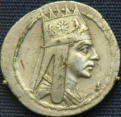



2,000 years of glorious history
Stt Tarkmanchats






St Tarkmanchatz parish school
2,000 years of glorious history
Armenian Jerusalem
For most of the world, Calouste Gulbenkian will always be known as
Mr Five Percent, the man who held that much stock in the Iraqi
Petroleum Company.
But for Armenians in general, and their Old City of Jerusalem in particular, the name Gulbenkian evokes notions of a much grander and more lasting perspective: this is the family that has, for over two centuries, held Jerusalem above all their joys, lavishing upon it veneration, affection and largesse that can never be quantified. "Two centuries of Gulbenkian presence is engraved on the town and its stones, as many commemorative inscriptions and votive tablets proclaim," as Astrig Tchamkerten testifies in "The Gulbenkians in Jerusalem" (2006, Calouste Gulbenkian Foundation, Lisbon), her definitive book on the Gulbenkian association with Jerusalem. The Gulbenkian connection to the Patriarchate of St James in Jerusalem is an ironclad tradition established a century ago, and destined to be a permanent feature of their association. It is no heresy to declare that the Gulbenkian Foundation, having fallen in love with the unique entity that is the Holy City of Jerusalem, has decided to adopt it as its own. The affection is reciprocated by the Patriarchate which continues to honor the dynasty and pray for its endurance and the success of all its endeavours. Tchamkerten has succeeded in capturing the soul and essence of the Gulbenkian affinity towards Jerusalem, an affinity that has passed beyond the bonds of devotion. There is almost not a single facet of the Patriarchate's manifold institutions that has not benefited from the Gulbenkian munificence and magnanimity. The 164-page book, written by Tchamkerten to mark the 50th anniversary of the Foundation, is painstakingly researched and lavishly illustrated - some of the photographs have never been published before. The oeuvre provides a running historical commentary of the Gulbenkian association with Jerusalem, accentuating the Foundation's "respect for the [Christian] faith, for education and for charity." She theorises that Calouste Gulbenkian's personal attachment to Jerusalem goes back to that memorable day when as a child, he was brought to the city to have his hair cut for the first time, in accordance with Armenian tradition. The Old City would become a lifelong fascination for Calouste. Tchamkerten reminds her readers that the Armenian presence in Jerusalem had been well and truly established even before the advent of Christianity, in the wake of the conquest of Syria and Palestine by the Armenian emperor Tigranes II. When Armenia adopted Christianity as its state religion, the influx of Armenian pilgrims intensified, leading to the establishment of the Armenian Patriarchate of St James in Armenian Compound, that covers over a quarter of the area of the Old City. Tchamkerten traces the emergence of the Gulbenkian dynasty to the Reshtouni princes, first mentioned in Armenian historiography in the 5th Century. The nobility is evident in every philanthropic undertaking the Foundation has launched, not only in Jerusalem, but in other parts of the scattered Armenian presence. "The Calouste Gulbenkian Foundation is also an institution that is open to the world, beginning with the Armenian world and its far-flung diaspora," as Tchamkerten notes. "Nobody but the Gulbenkian Foundation, with its Armenian roots, has faced so great a diversity of needs from the various peoples, communities, authorities and institutions of the diaspora. This may be the source of the originality, strength and authority of the name Gulbenkian, in Jerusalem as in Lisbon" where it has its headquarters. In an aside reminiscent of William Saroyan's "I should like to see any power in this world destroy this race," Tchamkerten wonders how, "beyond this illustrious [Gulbenkian] family and the continuous benefits they brought," "a nation as small as the Armenian nation could have achieved such influence in Jerusalem, within such a disturbed international city, when the nation had neither the status nor the prerogative of a State? Perhaps we could identify some traits possessed by the Armenians and argue for them: their devoutness, their rich culture, their flair for diplomacy and finance." Among others.




















